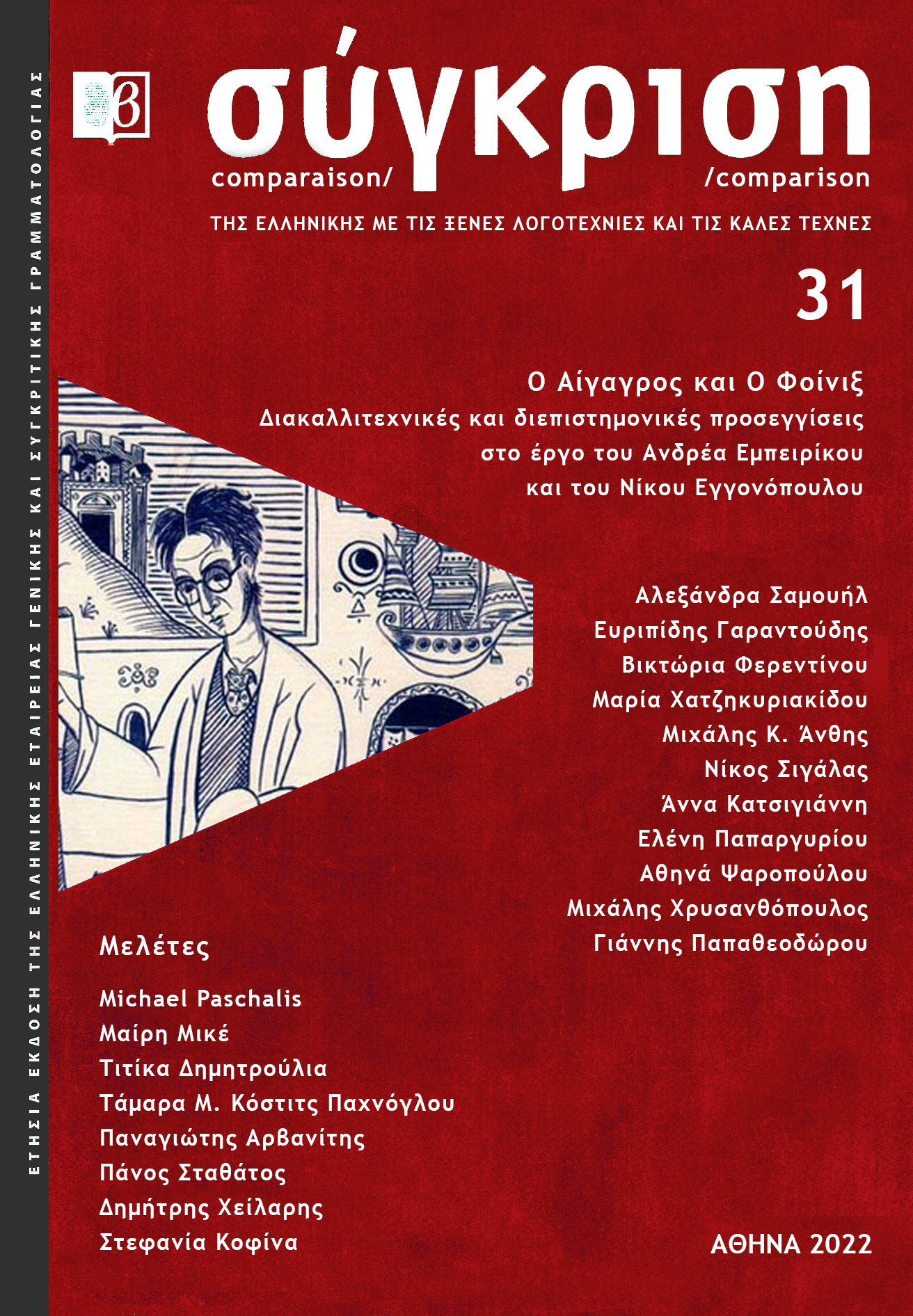ΒΙΚΤΩΡΙΑ ΦΕΡΕΝΤΙΝΟΥ, Τα συγκοινωνούντα δοχεία μιας υβριδικής ποιητικής: Ο μύθος ως διακαλλιτεχνική και διαπολιτισμική ώσμωση στο έργο του Νίκου Εγγονόπουλου
Abstract
The Communicating Vessels of a Hybrid Poetics: Myth as Intermedial and Intercultural Osmosis in the Oeuvre of Nikos Engonopoulos
In 1938, the year of the International Exhibition of Surrealism at the Gallery Beaux-Arts in Paris, the poet and painter Nikos Engonopoulos created Birth of Orpheus and Genesis of Myth. The depiction of the birth of young Orpheus as emblematic of the construction of myth recalls the mythopoetic process as articulated in the anthology of the poet, psychoanalyst and photographer Andreas Embeirikos, Writings or Personal Mythology (1936-1946): “Each myth’s becoming is a child who grows up.” This reception of myth should be situated in the context of the French surrealists’ endeavour to formulate a new collective mythology that would respond to the political and social environment of the interwar years. This collective mythology resorted to cultural topoi that were deemed countercultural, marginalised or anti-Enlightenment, ranging from primitive, prehistoric and Gothic art to magic, alchemy and mythological traditions of archaic or non-European cultures. In this framework, surrealist myth was reconfigured as a new poetic language in constant metamorphosis that could articulate through diverse media and cultural traditions the surrealist vision for the radical transformation of the world.
In Greece the appropriations of classical myth were central to the modernist canon. However, the Greek surrealists transformed myth in subversive ways initiating a dialogue with the present in the light of anthropology, ethnography, history of religions and psychoanalysis. Recent research has shown that Embeirikos and Engonopoulos conversed with French Surrealism and their colleagues’ engagement with alternative epistemologies and comparative religion and mythology, participating to a fecund renegotiation of the past. This paper aims at contributing to the revision of the history of Surrealism in Greece by exploring the function of myth, both as intermedial language and discursive practice, in Engonopoulos’s work. Most specifically, it purports to investigate the poetic anthologies Do not Speak to the Driver (1938) and The Clavichords of Silence (1939) alongside visual works he created at the end of the 1930s, such as the drawing SO4H2 (1937), and the engraving Vierge inviolable, métaphysique et surréaliste-sonore (1930s). The subtitles given initially to the aforementioned anthologies allude to the comparison of the arts and the equation of poetry and painting in an alchemical fusion pursued by the historical avant-gardes and Surrealism. Engonopoulos’s work and his experimentations with image-making should be revisited within this context and seen as a paradigm of the formulation of a new myth that sought to interweave the visual arts, poetry and alternative epistemologies into a revolutionary, hybrid form of expression that could effect the individual and society.
Article Details
- How to Cite
-
Φερεντίνου Β. (2022). ΒΙΚΤΩΡΙΑ ΦΕΡΕΝΤΙΝΟΥ, Τα συγκοινωνούντα δοχεία μιας υβριδικής ποιητικής: Ο μύθος ως διακαλλιτεχνική και διαπολιτισμική ώσμωση στο έργο του Νίκου Εγγονόπουλου. Comparison, 31, 28–41. https://doi.org/10.12681/comparison.31272
- Issue
- Vol. 31 (2022)
- Section
- Articles

This work is licensed under a Creative Commons Attribution-NonCommercial-ShareAlike 4.0 International License.
Authors who publish with this journal agree to the following terms:
- Authors retain copyright and grant the journal right of first publication with the work simultaneously licensed under a Creative Commons Attribution Non-Commercial License that allows others to share the work with an acknowledgement of the work's authorship and initial publication in this journal.
- Authors are able to enter into separate, additional contractual arrangements for the non-exclusive distribution of the journal's published version of the work (e.g. post it to an institutional repository or publish it in a book), with an acknowledgement of its initial publication in this journal.
- Authors are permitted and encouraged to post their work online (preferably in institutional repositories or on their website) prior to and during the submission process, as it can lead to productive exchanges, as well as earlier and greater citation of published work (See The Effect of Open Access).



